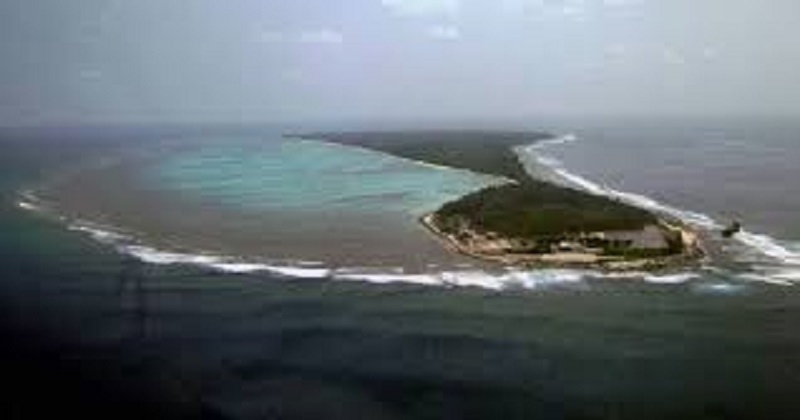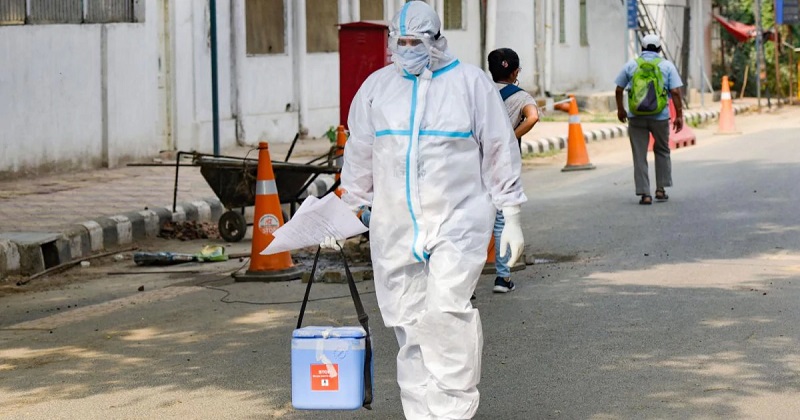
New Delhi: After mid-January this 2021, Lakshadweep, a haven of 36 islands in the Arabian Sea, was covid-free heaven in India. Understanding its poor medical support won’t be capable to cope if Covid affects the tiny union territory, the government had set in place an extended containment strategy and endured to successfully hold the virus off through 2020 even as it destroyed the rest of the nation.
But all this transformed in the new year. On 18 January 2021, Lakshadweep recorded its initial Covid case. When the patient’s 31 first contacts were tested, 13 of them were discovered positive too, recording a test positivity percentage of 42.4. In four months after 17th May Lakshadweep has recorded 4,986 cases and 14 fatalities. The current caseload is 1,208 cases.
The UT has therefore over 7 percent of its complete population of about 70,000 contaminated by the virus. The view on why Lakshadweep witnessed such a surge in the numbers, though, varies. While Mohammed Faisal, the only MP from the UT, criticized it on the determination to ease the severe quarantine rules in December 2020, officials in the administration said it was due to the destructive new strain and mobility of people as economic activity returned.UT Administrator Praful Patel also stated that since the archipelago’s central relationship to the “mainland” was Kerala, it was but natural that the state’s wave in Covid cases would “reflect in Lakshadweep as well”.The archipelago has three access points in all from Kochi and Kozhikode in Kerala and Mangaluru in Karnataka.

Under the traditional standard operating procedure (SOP), passengers would be isolated for seven days in guesthouses operated by the UT administration in Kochi, and also in two hotels held there for the plan, before they took an RT-PCR test. After landing in Agatti also, they had to undergo another 14-day quarantine. Related isolation methods were in place in Kozhikode and Mangaluru also. Though, in December, a fresh SOP was published, which did away with the quarantine period both in “mainland” India as well as in Lakshadweep. According to the current guidelines, all that one required to access the UT was a negative RT-PCR report from an ICMR-approved laboratory.
Collector Asker Ali said it would be incorrect to criticize the wave in cases completely on the relaxation in quarantine standards. He said that the surge was because of two main reasons, the elevated movement of people with financial action returning and the “very high” transmission frequency of the fresh strain.“Between January and May, there was a movement of more than 15,000 people between mainland India and Lakshadweep. Over 400 weddings took place in the past four months, 1,000 tourists also came to the union territory, over 400 mechanized sailing vessels, which take care of supply material, were also operating, fishing started, students were moving up and down for educational purposes. We need to realize that a year on, these were all requirements for livelihoods of people,” Ali explained.
Ali said 98 percent of the cases were asymptomatic, but there were some severe cases too and the patients had to be airdropped to Kochi for treatment at the Sanjivani Hospital of the Indian Navy. Kochi in Kerala is the “mainland” on which the group of 36 islands, of which only 10 are occupied, depend for everything from fundamental stocks to healthcare. All the islands are 220-440 km far from the coastal city of Kochi, with flights and ships working chiefly from Kochi and Kozhikode.“Even during Ramzan, people were moving back and forth between Lakshadweep and Kerala. So, naturally, if there is a rise in cases in Kerala, it will reflect in Lakshadweep as well,” Administrator Patel told.
Kerala witnessed a record high number of Covid cases by the end of April with over 38,000 new cases recorded in a single day. Lakshadweep Health Secretary Amit Satija told that the UT also recorded a very high number of cases 941 — between 19 and 25 April, though he said this was also because testing was ramped up. To restrict an additional spread of the virus, the UT has from Monday began clamping a ‘corona curfew’ in four of the 10 occupied islands- Kavaratti, Andrott, Amini, and Kalpeni. The curfew is relaxed for four hours from 6 am to 10 am every day.In Kadmat and Bitra islands, a night curfew is in position. The quarantine SOP has also been reintroduced on the Lakshadweep.
According to fresh rules, family members of the person moving also require to quarantine themselves if they remain in the same house. The officials also said the center of the government is on vaccination. 32,000 people have already been injected into the UT. While Satija could not state how long it would take to vaccinate the whole population, he claimed that 90 percent of the healthcare and frontline workers had received both doses of the vaccine, calculating that 86 percent of the above 45 years population and 98 percent of the above 60 population had got at least one dose.
“We have received the first batch of 1,250 vials for the 18-44 category. We expect the next batch sometime this week,” said Satij said. The main lesson received from this wave in cases, according to both Health Secretary Amit Satija and Collector Asker Ali, was the necessity to increase up facilities. These include hospital beds, medicines, oxygen resources. At present, there are just three hospitals in the UT — Indira Gandhi (IG) Hospital and Rajiv Gandhi Speciality Hospital in Kavaratti, and the Government Hospital in Minicoy. The Indira Gandhi Hospital has 70 beds, while the Rajiv Gandhi Speciality Hospital is a 100-bed tertiary care convenience. Also, there are three 30-bed community health centers in the three islands of Androth, Amini, and Agatti.
“We have started discussing preparations for a third wave (if that happens). We need to ramp up physical and human infrastructure. We have also called a critical care expert here so we don’t need to fly out critical patients to Kochi. We will try and treat everyone here. However, if it gets very critical then they will be airlifted to Kochi,” Satija said. He said the principal lesson was to obey the central government’s guidelines of tracking and testing, which did it easier to restrain the virus.
Satija also said the topography of the archipelago was a hurdle for them since the islands are positioned far away from each other and isolated, with connectivity feigning a problem.“We don’t have a Lakshadweep model but an island-centric model,” he said. Ali agreed. He said each island was considered one unit and the entry points from Kochi, Kozhikode, and Mangaluru were being monitored.“We are also planning on setting up two oxygen plants in Agatti and Kavaratti to prepare for a potential third wave, and they should be ready by the end of this month. And we are also stocking up on oxygen concentrators and cylinders,” he said.
Read more; “Fake job offers” ; 300 nurses from India stranded in UAE
“In Lakshadweep, we work like a family, a team. And all the work is done by the government, with no private players’ help.”Mohammed Faisal, the two-term Congress MP from Lakshadweep, told that he assumed it was the indulgence in quarantine measures that occurred in the wave in cases in the union territory. He also said the number of cases being recorded would be much higher if RT-PCRs were carried instead of rapid antigen tests. Faisal said he also brought to the streets to object after the SOPs were altered under the new administrator of Lakshadweep, Praful Patel, who took command after Dineshwar Sharma, the former administrator, died in 2020.
The MP said: “I had requested them to at least keep the provision of one-week quarantine period before coming to Lakshadweep, but they did not listen. If the quarantine SOPs were continued, there would be no cases. When the entire world was suffering, Lakshadweep was Covid-free. The administration is entirely to blame for the surge.” Referring to the charges, Patel told he “did not wish to get into them”, but added: “How long could we keep Lakshadweep shut for? It had to open up at some point.”

Post Your Comments